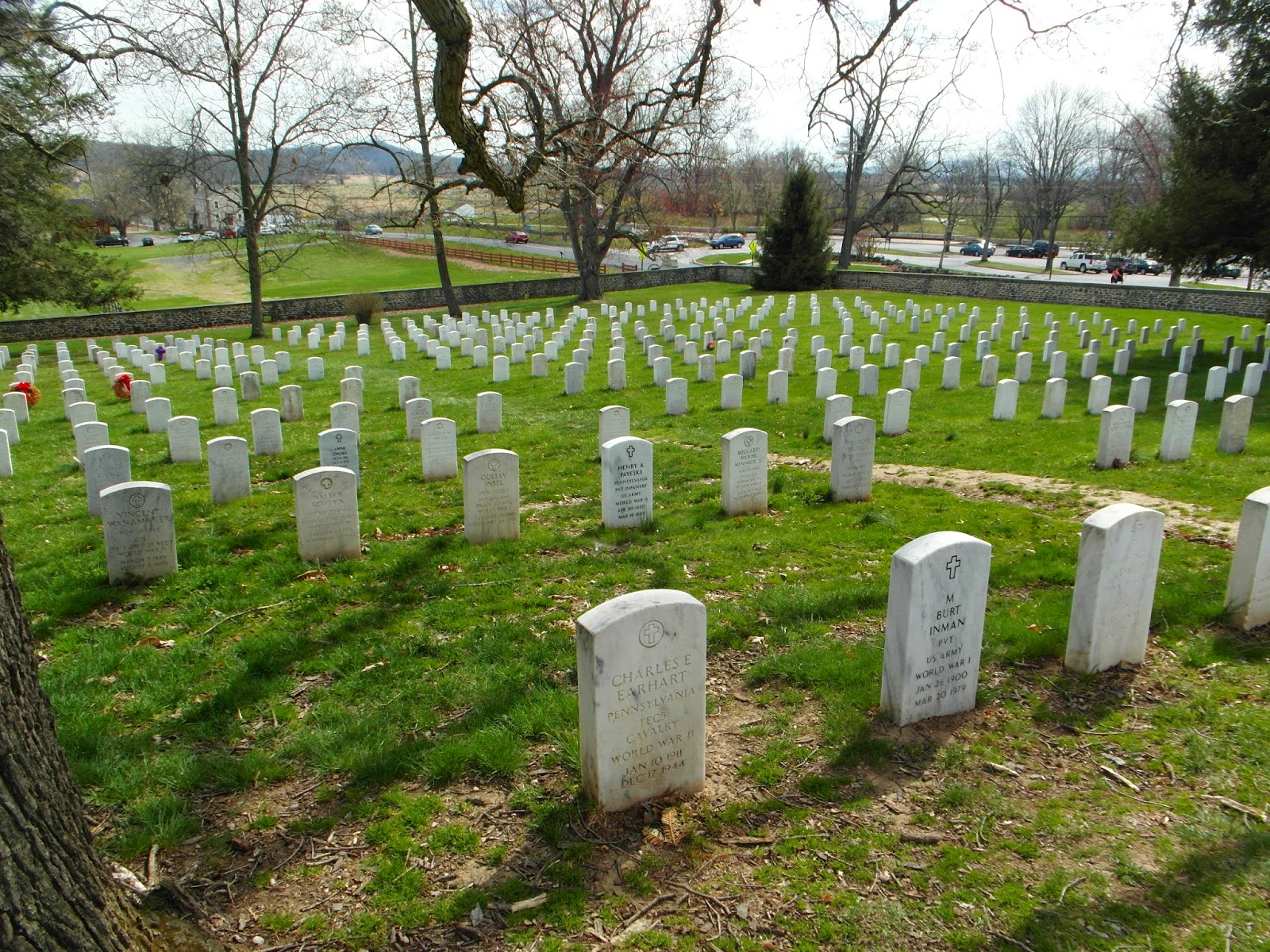We have just come from Washington DC, a very large city, with numerous monuments and statues strewn throughout its environs. They seemed to be everywhere, but in fact there can be a good mile or two between some of these special
places.
Most people drive or take a tour bus, but because the area of interest is
small, there are other ways of getting around to see everything.
There are bicycle tours, horseback tours, and segway tours. I would even suggest
walking except that there are no sidewalks outside of town. Besides, you do
enough trudging over fields and rocks to get to some of the statues that you
really don’t need the extra exercise.
 The statues are in places depicting where certain generals
or other important people died or did an act worthy of noting. Since battles do not stay nicely on the clean
roads and paved drives, you sometimes find these works of art in remote areas,
like right in the middle of fields or hidden in the woods.
The statues are in places depicting where certain generals
or other important people died or did an act worthy of noting. Since battles do not stay nicely on the clean
roads and paved drives, you sometimes find these works of art in remote areas,
like right in the middle of fields or hidden in the woods.  And then there are the cenotaphs, often huge
monuments to the soldiers of each state. These can be graphic or whimsical,
ornate or simple.
And then there are the cenotaphs, often huge
monuments to the soldiers of each state. These can be graphic or whimsical,
ornate or simple.
Interpretive signs will detail for you all the tactical
strategies that the officers used as the battle raged. And also any errors in those
strategies, and failures that occurred due to mistakes made. In short, far more
than I had ever wanted to know about war.
They have also set up the
cannons where they would have stood during battle, aimed out over the fields
and hills.
 The only thing “new” is the cemetery. It was created a few
months later, to give the Union soldiers a proper place to be buried. The poor Confederates
were shipped home or buried in a group.
The only thing “new” is the cemetery. It was created a few
months later, to give the Union soldiers a proper place to be buried. The poor Confederates
were shipped home or buried in a group.
But even the “winning” team had so many
unidentified dead, that most of the stones in the cemetery just have the word
“Unknown” on it, or sometimes only a number.
Ok, we all know the words, so let’s sing it together:
War, huh,
Good God, y’all
What is it good for?
Absolutely nothin’……
W






Wow! We drove by the fields years ago. We went really slowly so as to absorb at least a little of the magnitude of this event. It was overwhelming. But I would definitely go back to see the statuary.
ReplyDelete